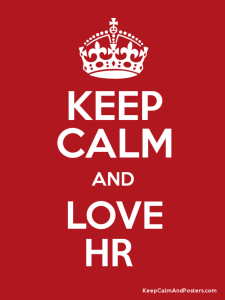— January 11, 2019
Too often business leaders reduce HR to little more than order-takers: fill requisitions, solve employee problems, calculate compensation tables, run surveys. While beneficial, these don’t compare to your higher purpose of ensuring the organization’s talent is—and gets treated as—a strategic asset. But you can’t play that role without first shattering the order-taker illusion and claiming your proverbial (and often elusive) seat at the table where real decisions are made.
It’s tempting, of course, to try “helping” managers and executives appreciate the value you bring. But begging people to accept your ideology and pressuring them to notice your potential isn’t the answer. Just as any other service business would, you’ll win over your internal and external clients by providing solutions to their problems in terms to which they can relate: cut the jargon, drop the self-serving anecdotes and shift your conversation to what keeps them awake at night.
Here are four questions that can help you get started, no matter what part of HR you call home.
-
How much room for improvement do you see in the speed and quality of decisions?
Many managers and executives worry about decision-making. Anyone who’s run a complex organization for more than a few months has felt the pain when intelligent group decisions don’t happen, or don’t happen quickly enough. But recognizing a failure isn’t the same as knowing how to monitor for and prevent it. They may not know how to create better decisions, but you should.
If you’re in employee relations, monitor whether employees think the company makes good decisions that incorporate their input. Feeling heard is a key factor for engagement, to be sure, and it’s so much more: the history of failed organizations is littered with management teams not recognizing red flags raised by their own people. If you’re in training and development, notice what management is taught about decision-making and what they actually do. Does might make right? Is every debate a contest of wills? Or do groups follow protocols to elicit maximum intelligence quickly? Wherever you are in HR, remind leadership of the value of group decision-making and equip them with tools to help.
-
How much value would there be in replacing silos with coordinated output?
Middle and upper level managers are constantly refereeing warring tribes. While posters on the walls say “Teamwork,” the reality in the halls may be anything but—especially when it comes to groups who perceive themselves as competing for the same resources. Any manager or leader caught in the middle is getting pulled away from her real priorities: the results her own superiors demand. Luckily, you’re in a position to notice—and help.
If you’re in recruiting, monitor duplicate hiring between groups and how different teams compete over the same candidates. Escalate patterns you discover to the lowest-level manager responsible for both groups, asking whether that competition is helping or hindering broader goals. If you’re in compensation or legal, look closely at inconsistent job-grade definitions between silos. When warring tribes are evolving warring cultures, that’s where they appear. Wherever you are, push for compensation plans that link individual bonuses to the shared results of team and manager, rather than individual results. Nothing brings down silos faster!
-
What would happen if people spent less time in meetings, but got more done?
Meeting-hating is a popular corporate sport, for good reason: we’ve all sat through painful mandatory gatherings in which time itself and our own productivity stood still. For many professionals, even the best meetings they’ve experienced were little more than a rotating series of one-on-one conversations in front of a slightly bored audience. They don’t know there’s a better way, but you do.
It’s not possible for humans to coordinate work without talking. Meetings aren’t going away, but bad ones can improve. If you’re in employee relations, analyze survey and satisfaction data: are people getting work done in meetings or wasting time there? Are they showing up voluntarily or being dragged in? Compensation and legal can help quantify the real cost of even minor meetings and push for improvements. And, you’re always free to offer tools to a group or its leader for more clearly defining—and more efficiently executing—the intended objective of any meeting.
-
What if every management position’s bench were three successors deep?
Have you noticed you can’t possibly do enough management training? Your leaders have too. Their goals require a bevy of managers who’ve each evolved specific experience. If anyone leaves, at best there’s a spreadsheet listing key employees to tap as backfill. But those employees can’t be trained in advance for all the jobs they might be getting, because they’re too busy with their own work.
The solution is to train every manager for her own manager’s position, inside the job, constantly. If you’re in recruiting, you know it takes an externally hired manager three to nine months to spool to productivity. Ask your clients the cost of that time and how they’ll bear it. Then, work with training and development to teach existing managers to ask for lateral development. By directing everyone who manages anyone to learn as much as possible about their peers, managers of managers create better consultative members of their own teams in the short term, and qualified candidates to replace themselves in the long term. From HR, you’re uniquely positioned to encourage the practice and explain its value.
Whether you’re in employee relations, training and development, legal, compensation or recruiting, you’re a member of the team best suited to solve leadership’s biggest people problems. Do that, and soon you won’t be asking for a seat at the table with managers and executives; you’ll be offered one, and it will be yours to keep.
Previously published in HR Daily Advisor.
Business & Finance Articles on Business 2 Community
(22)
Report Post





